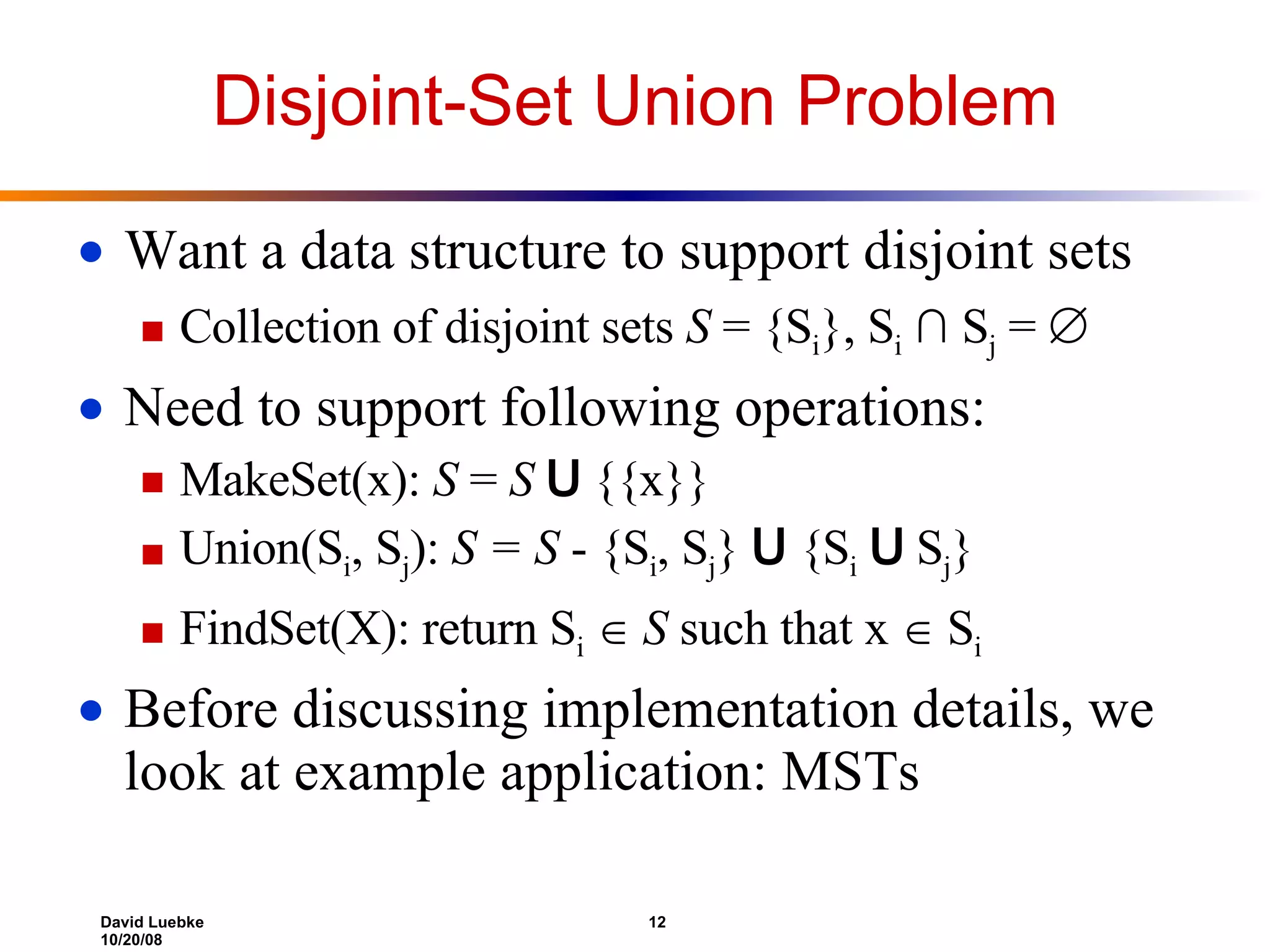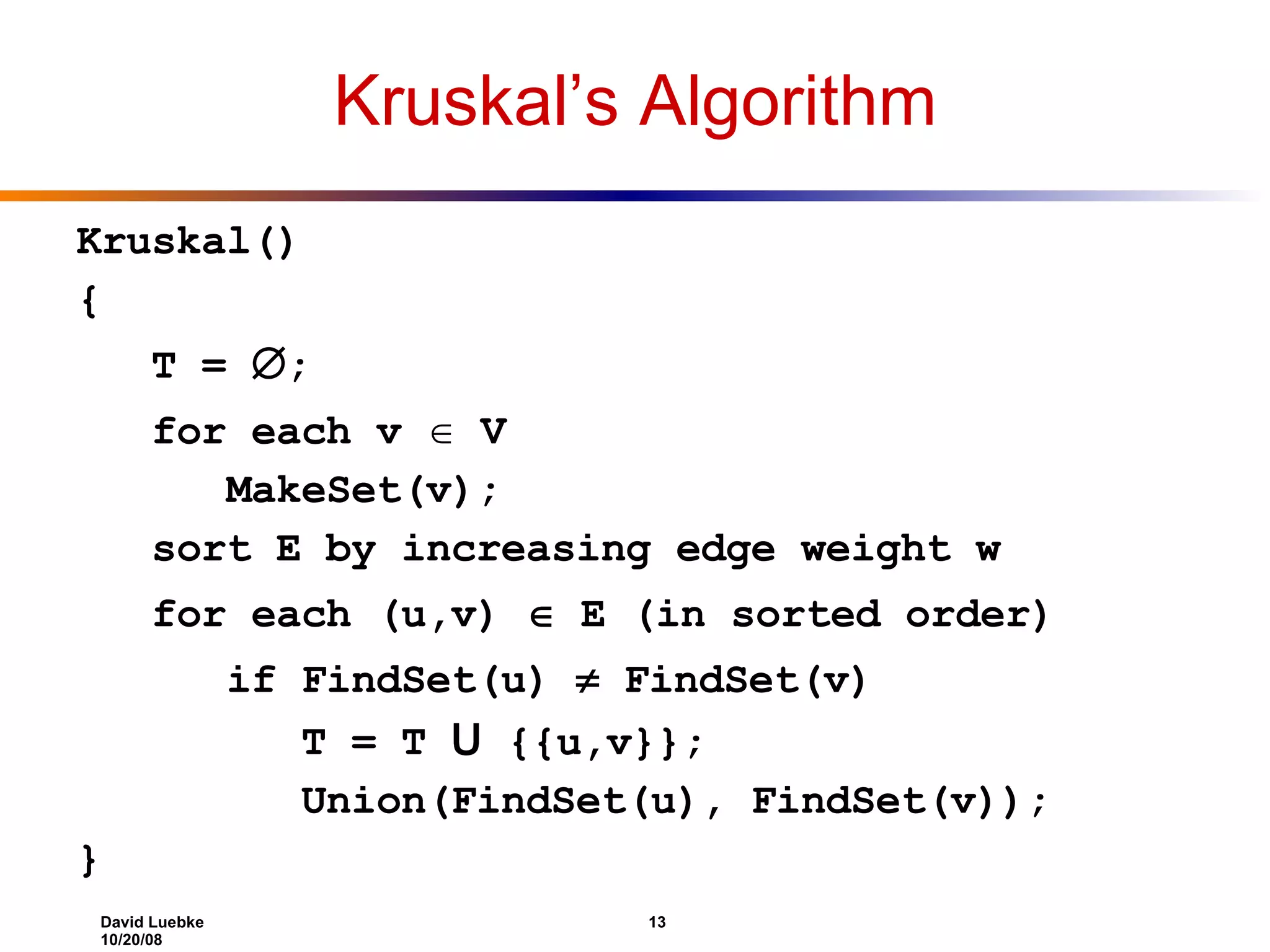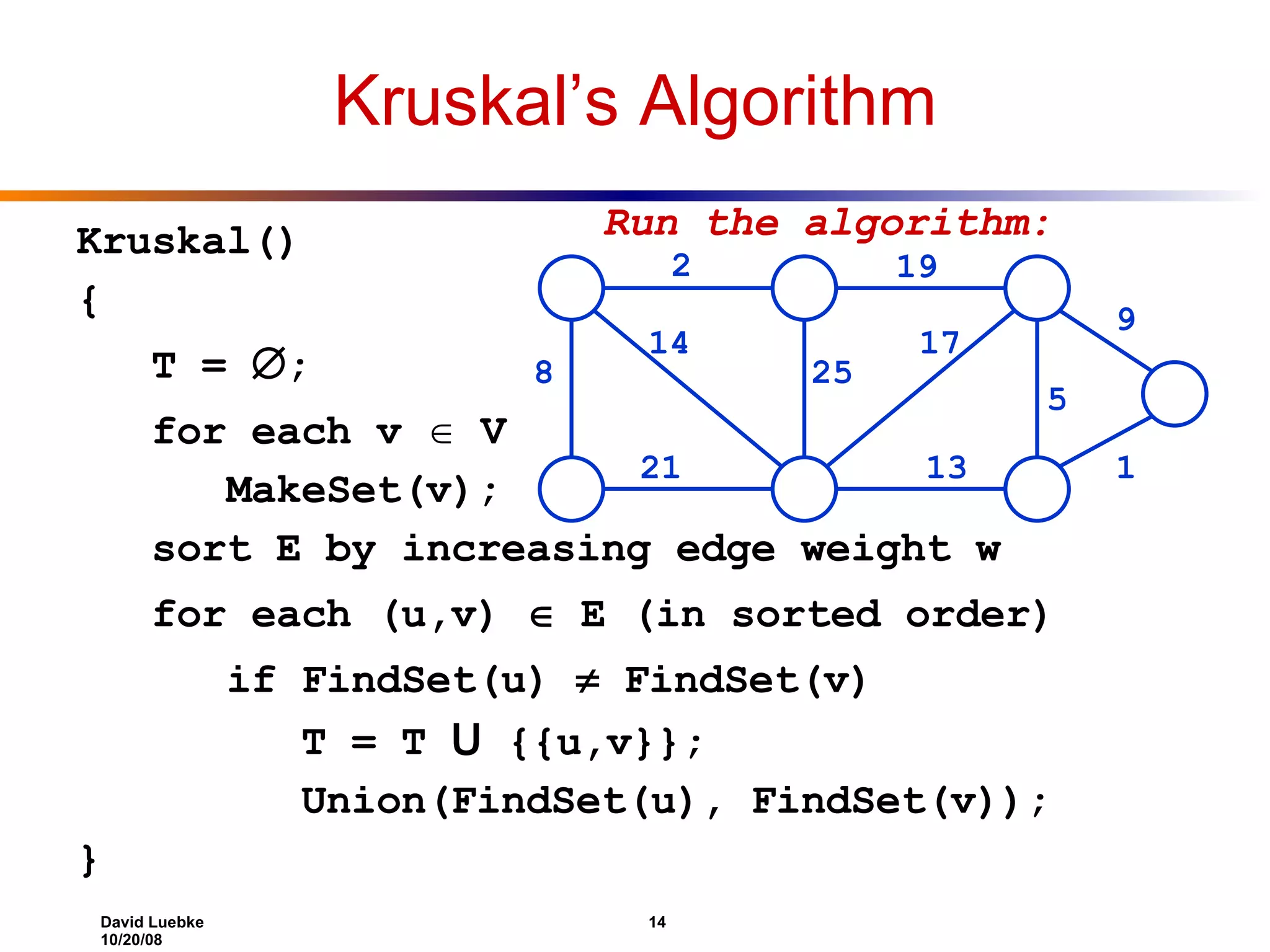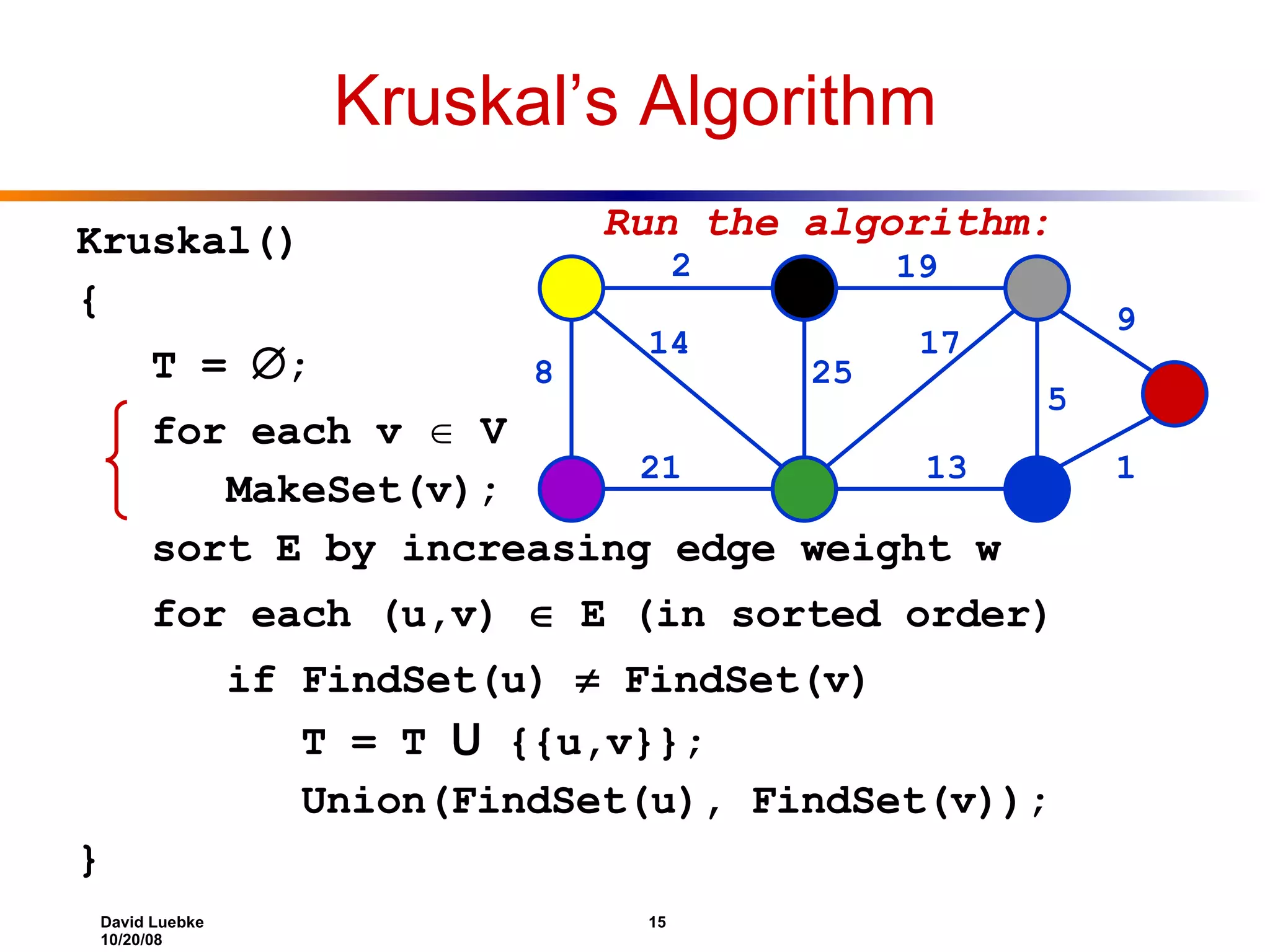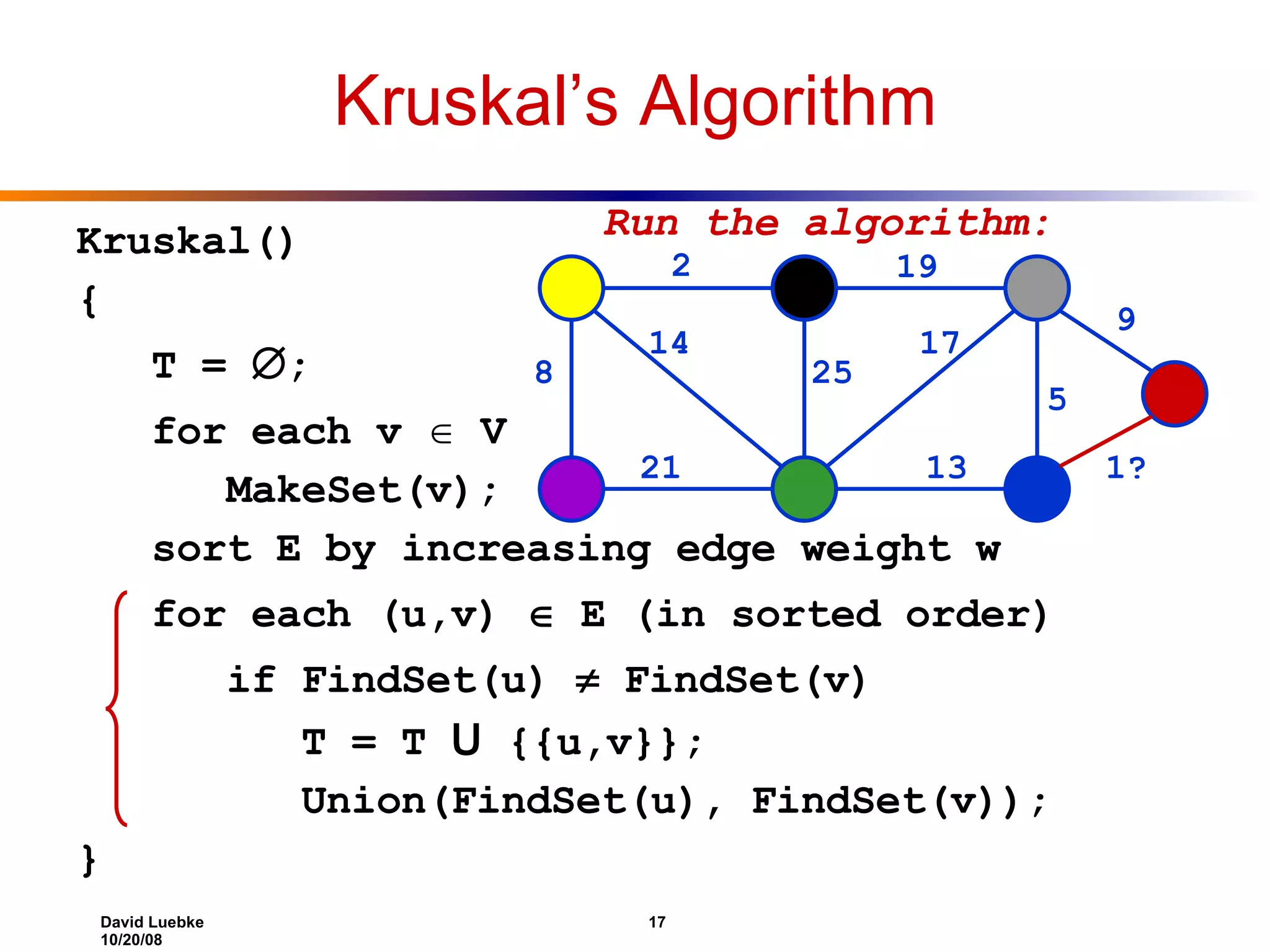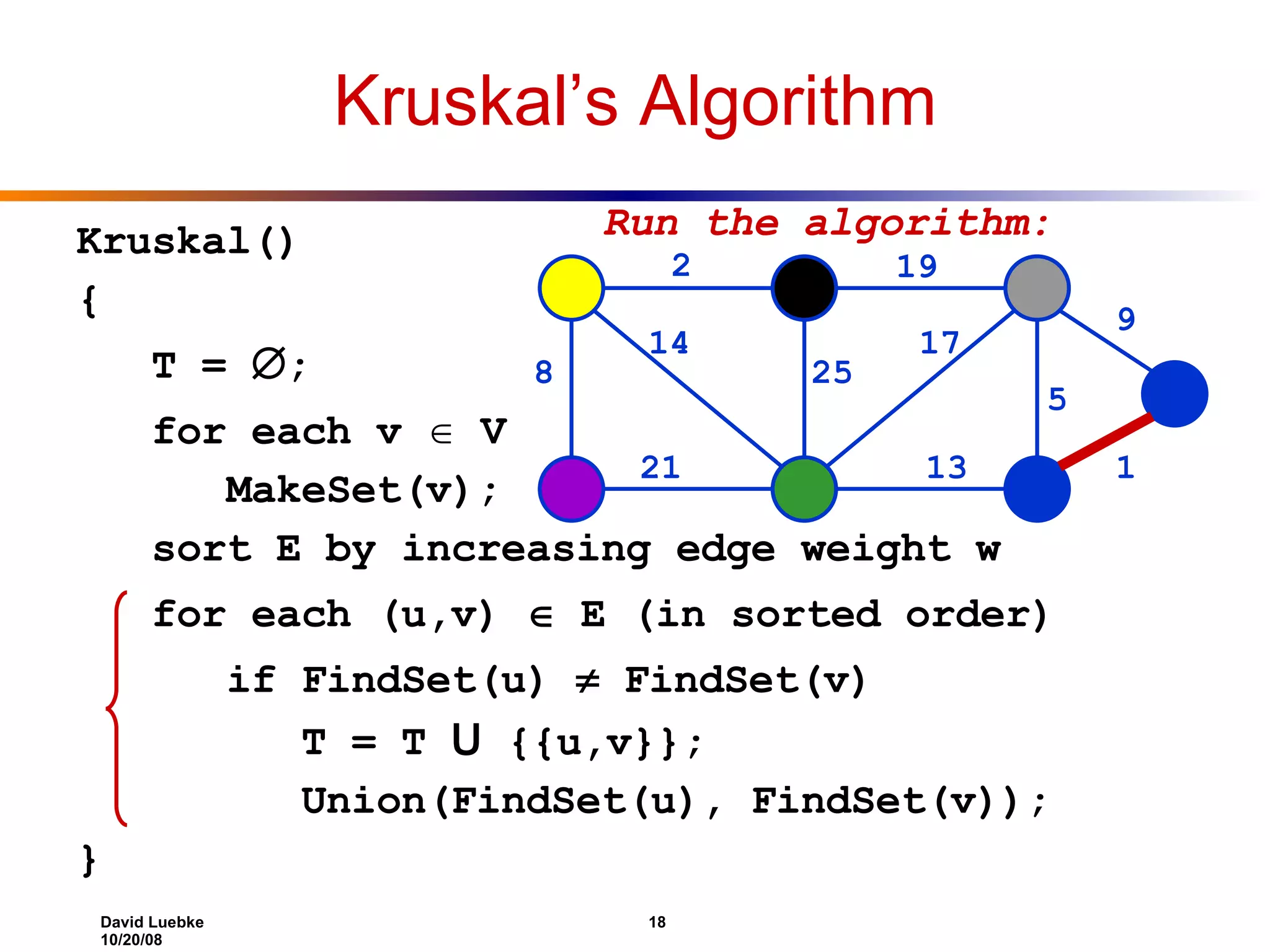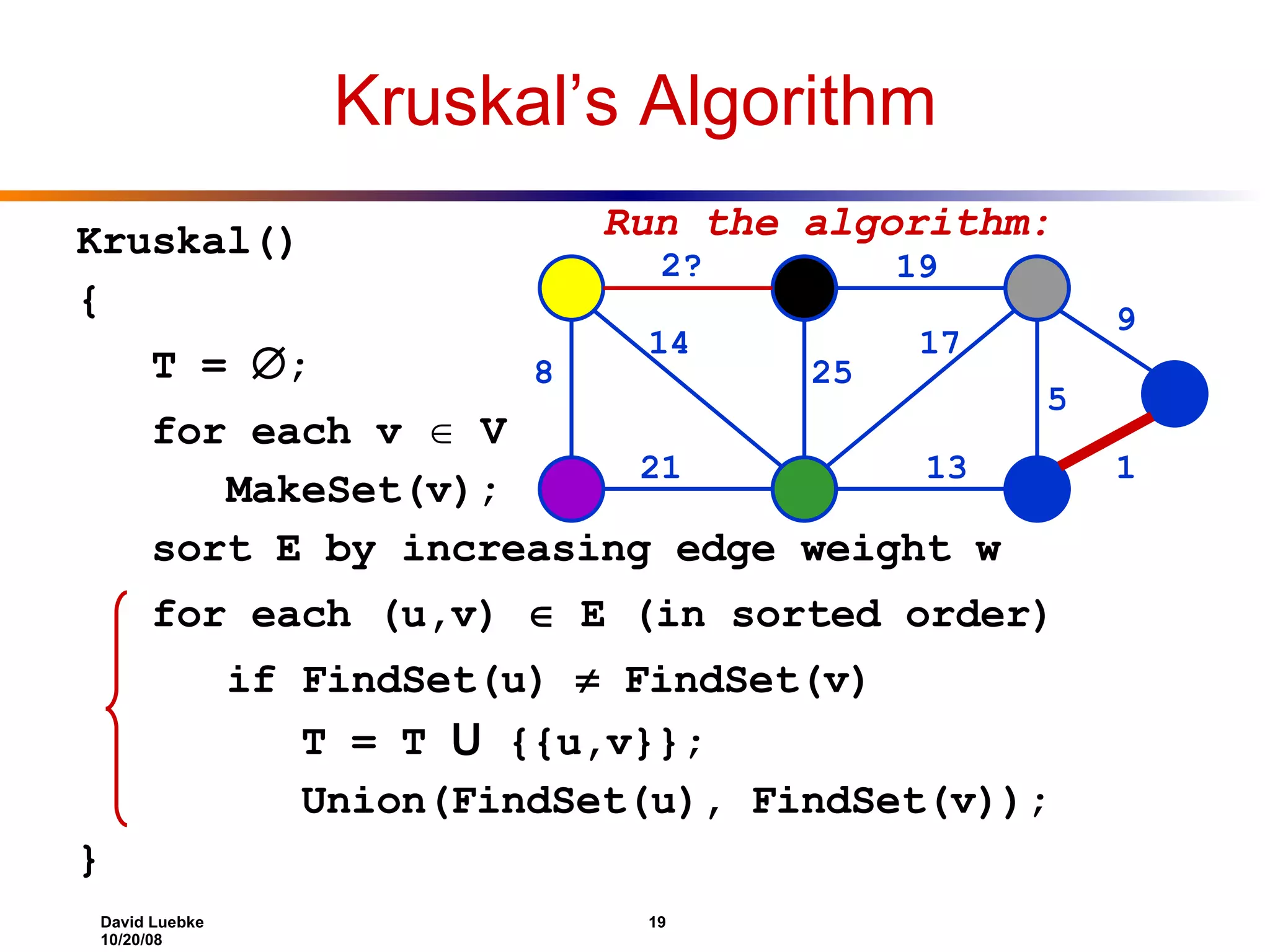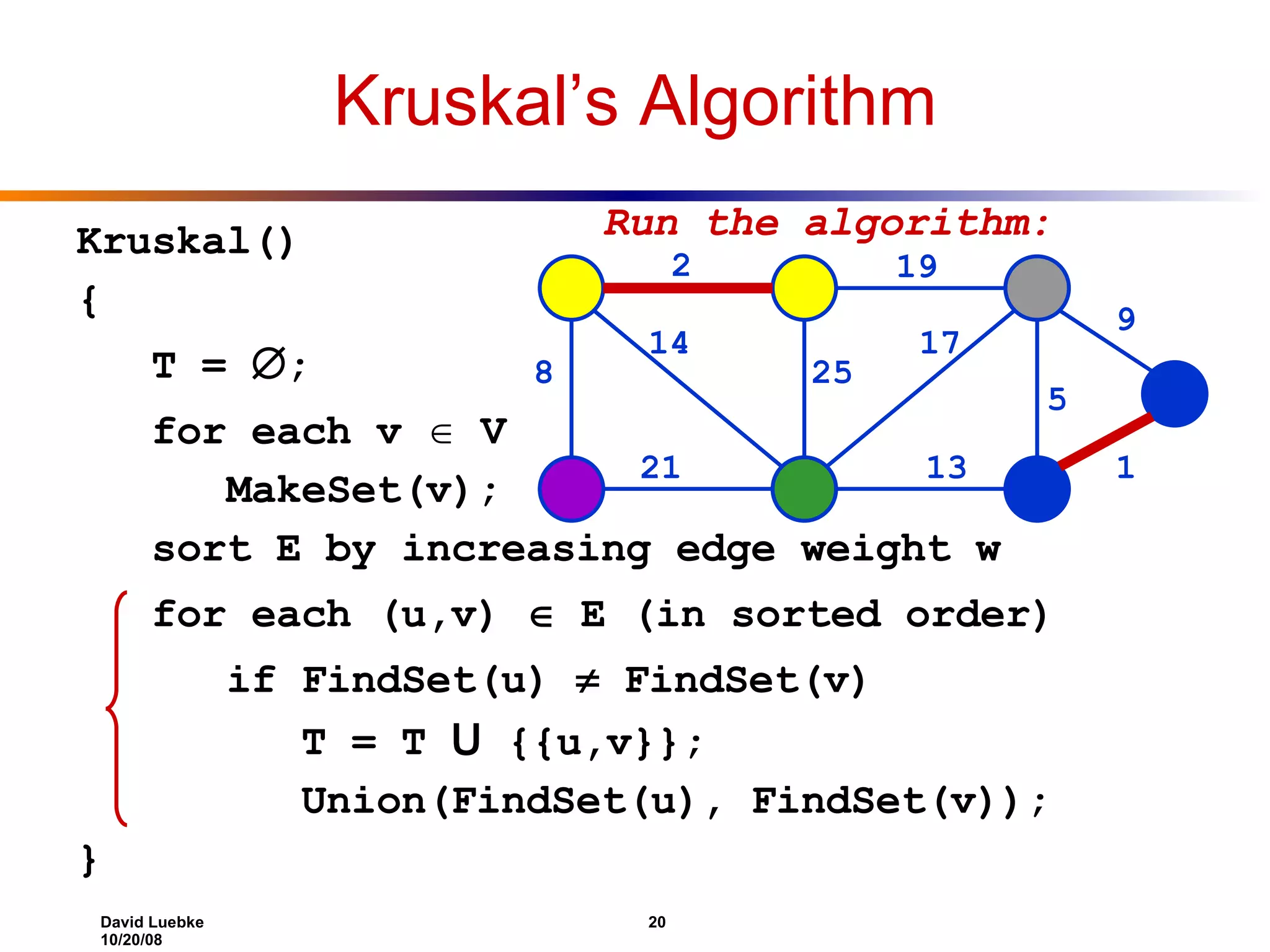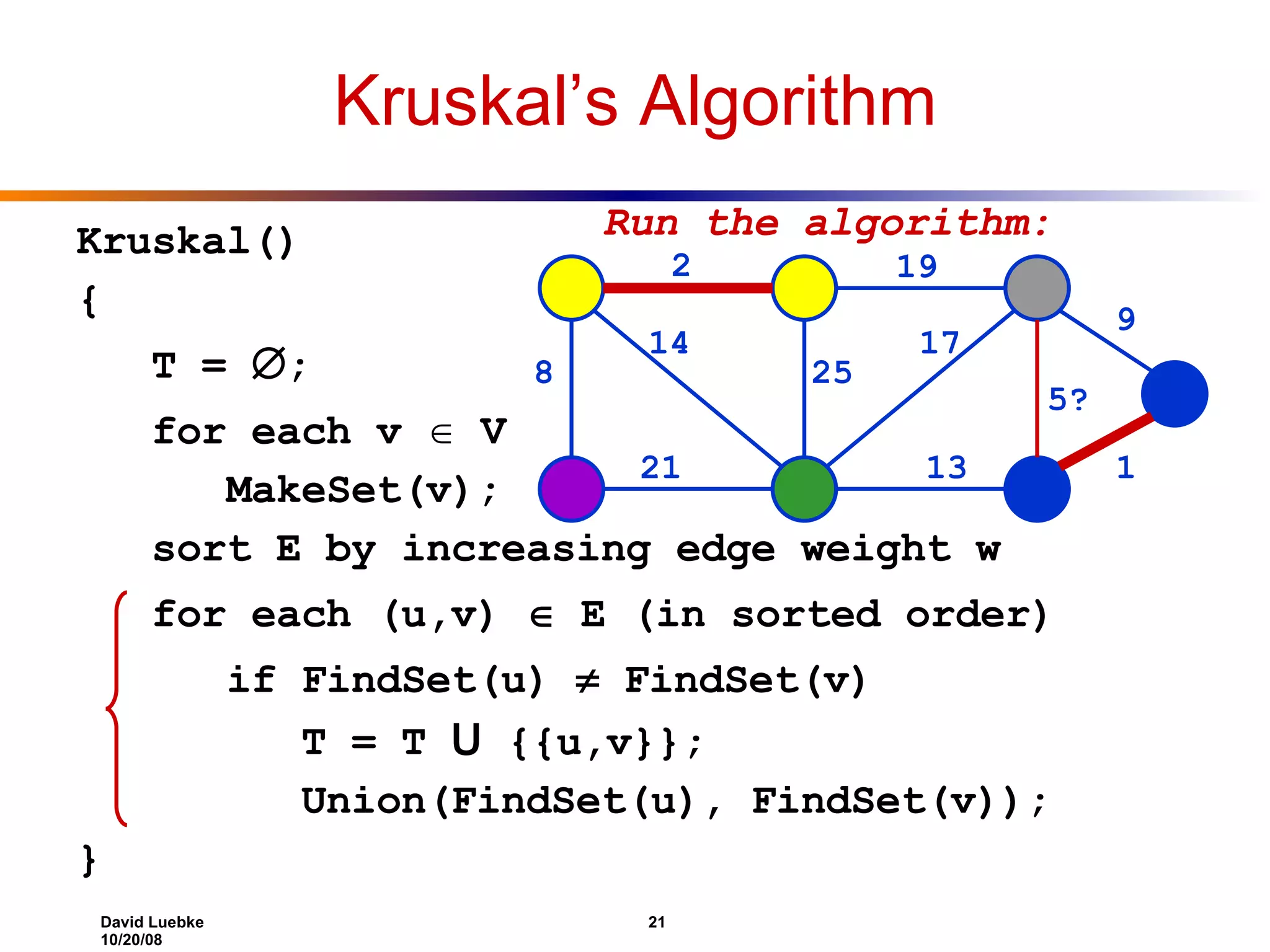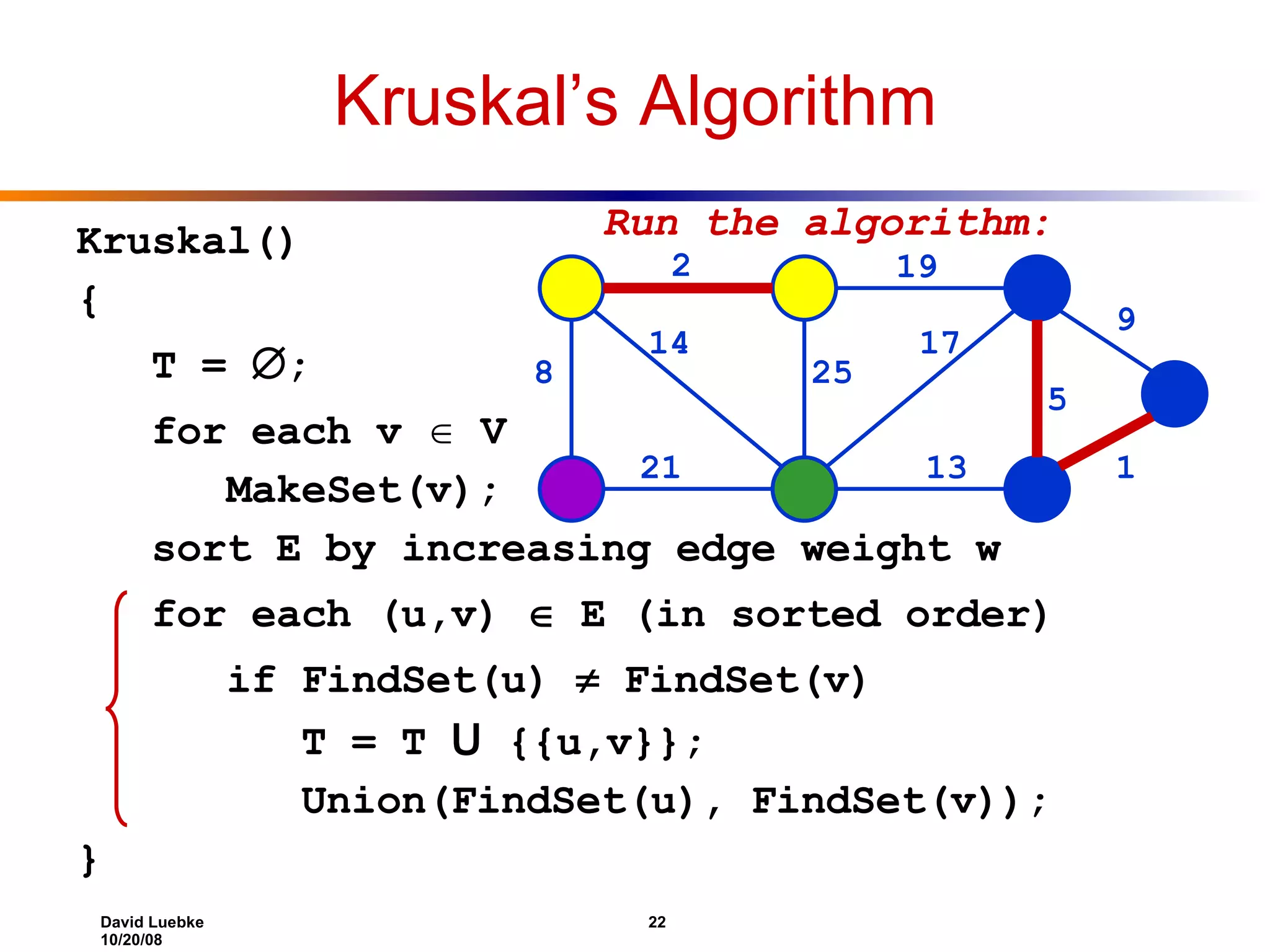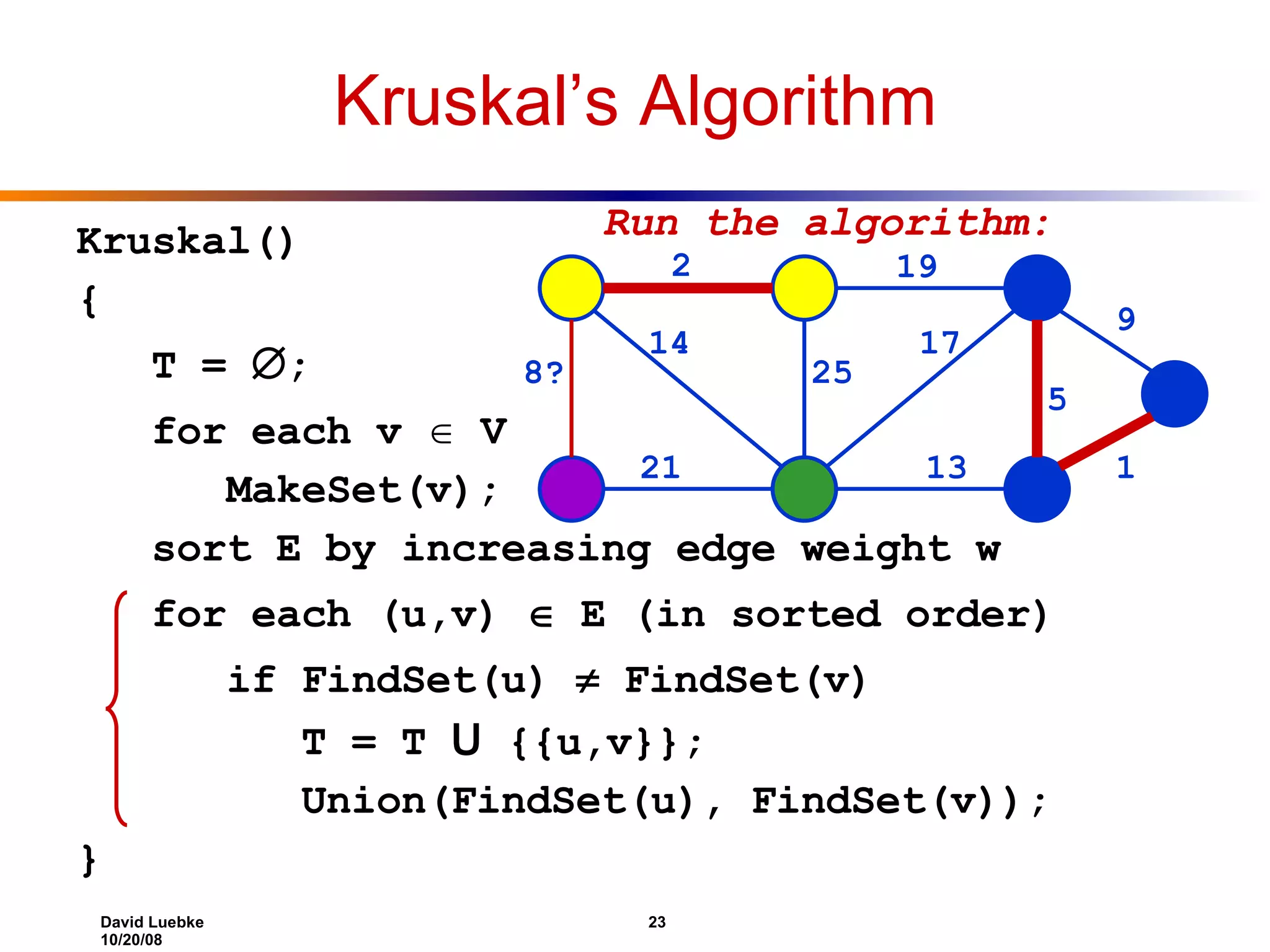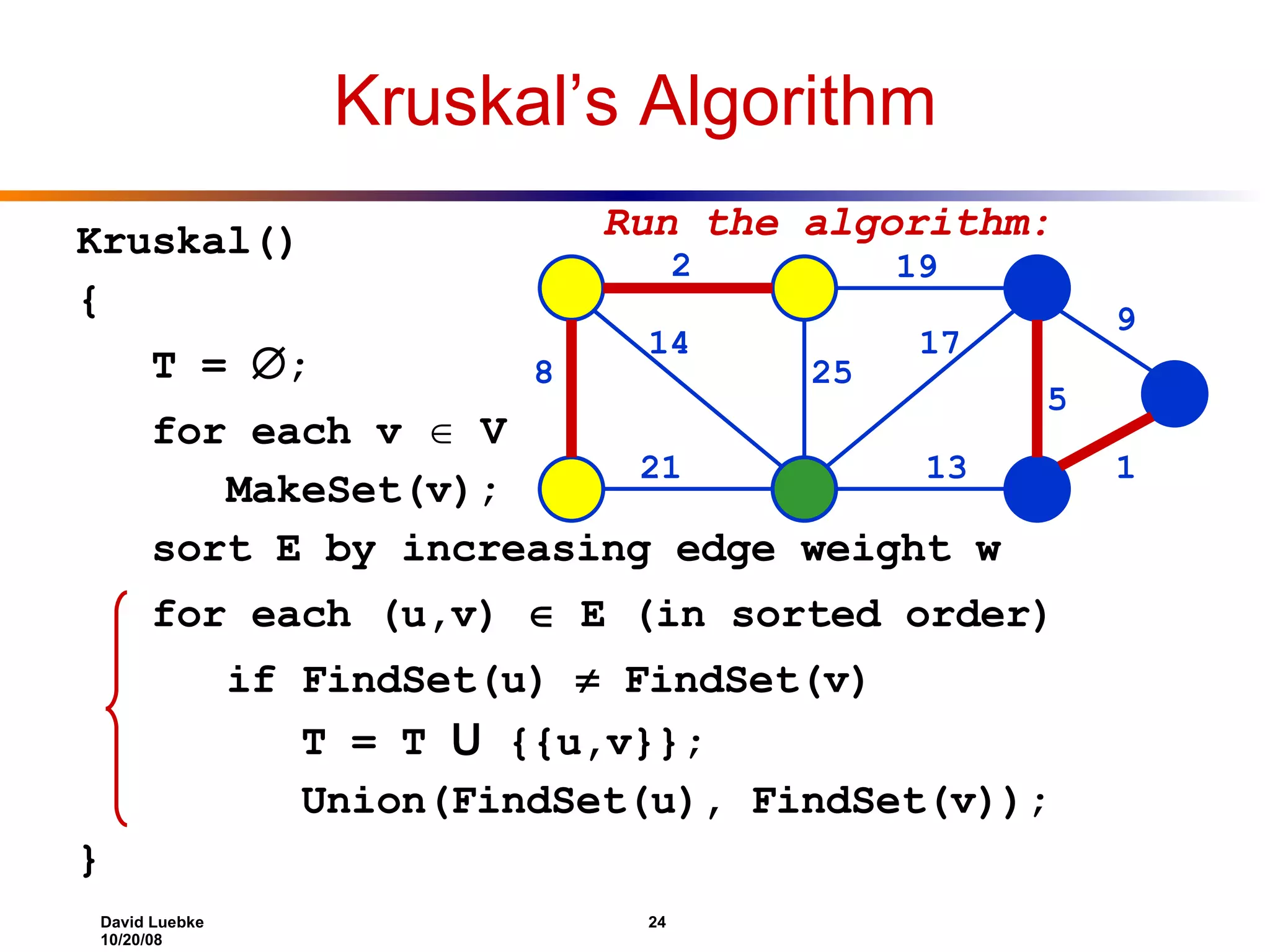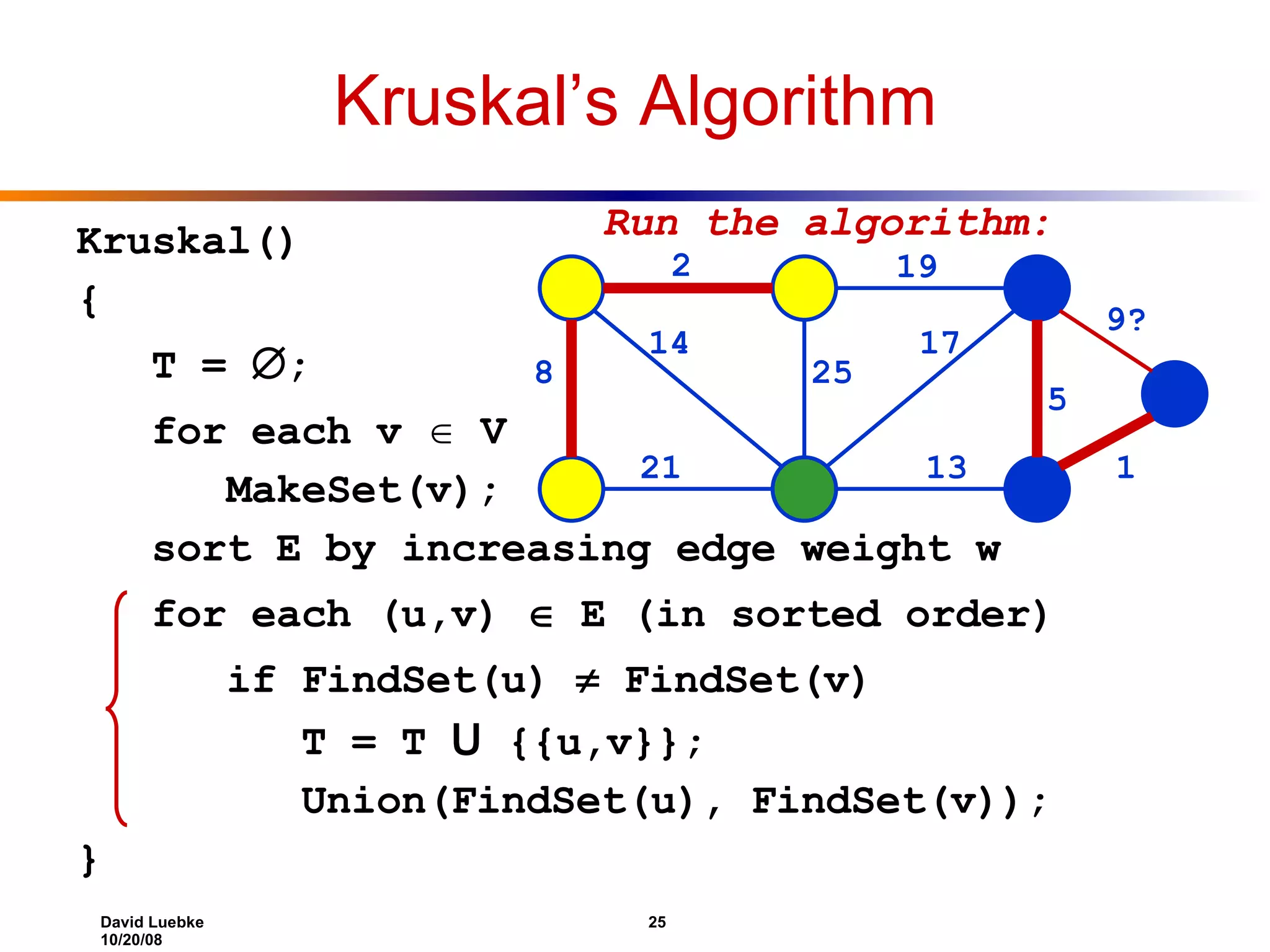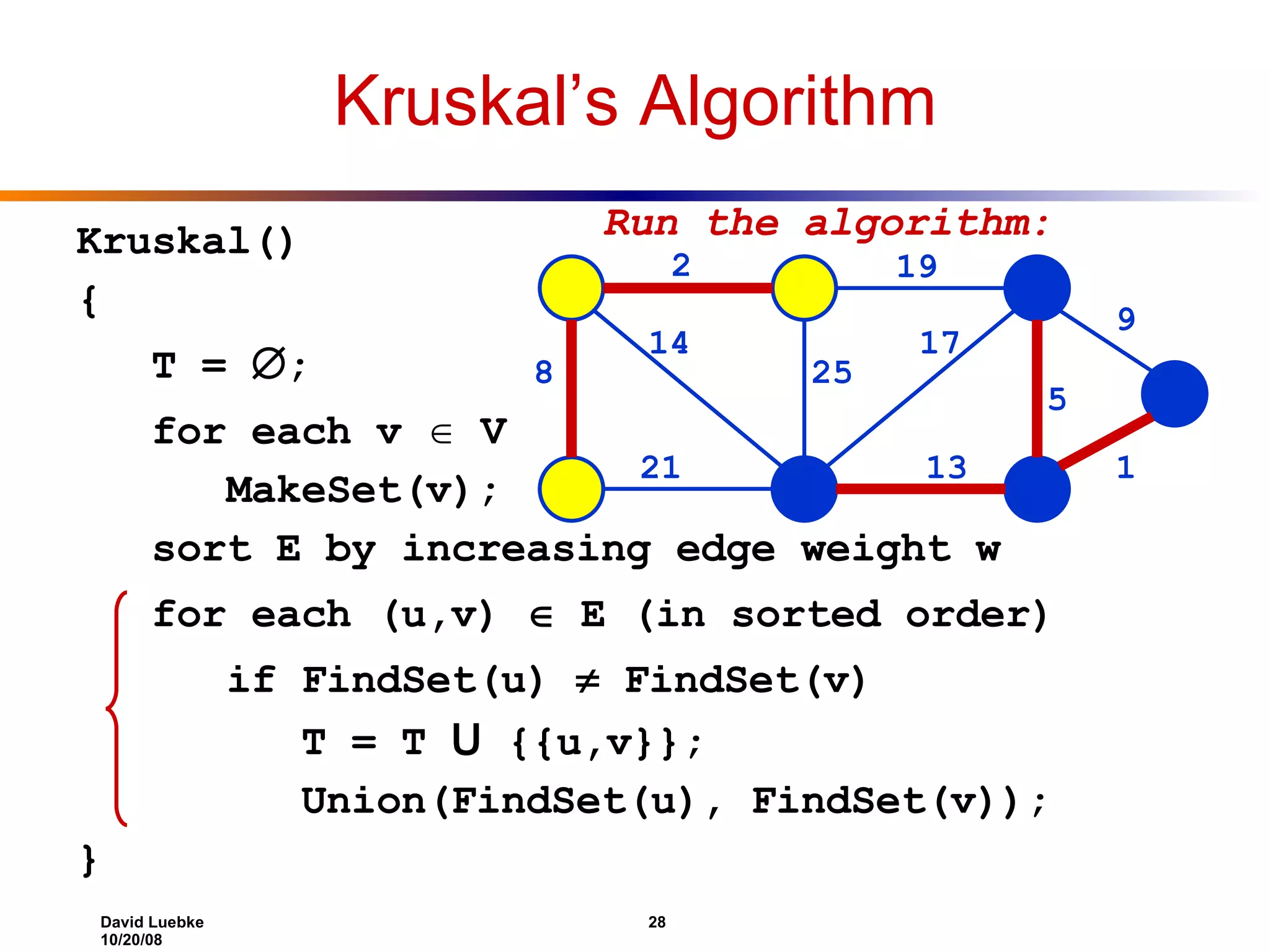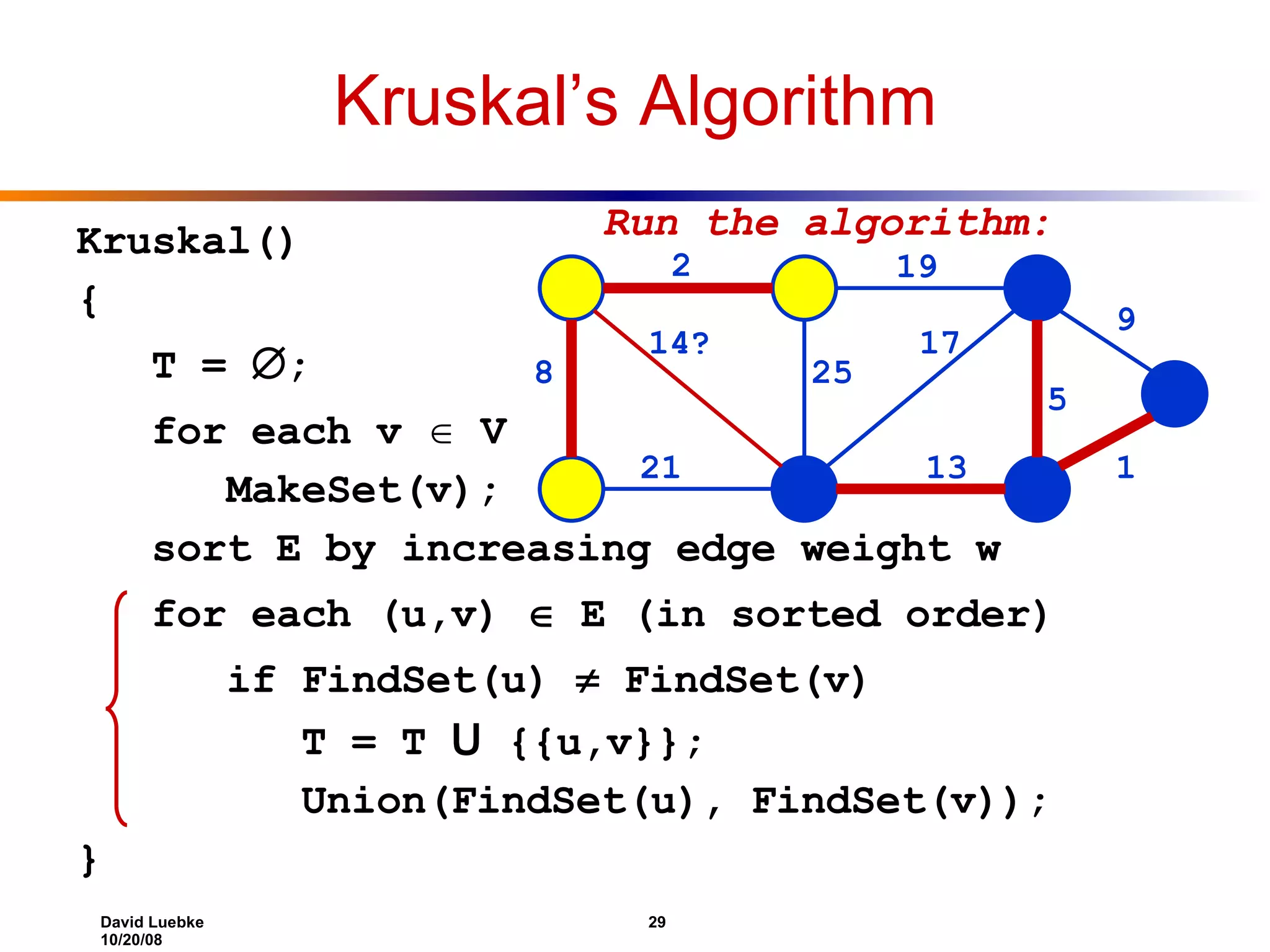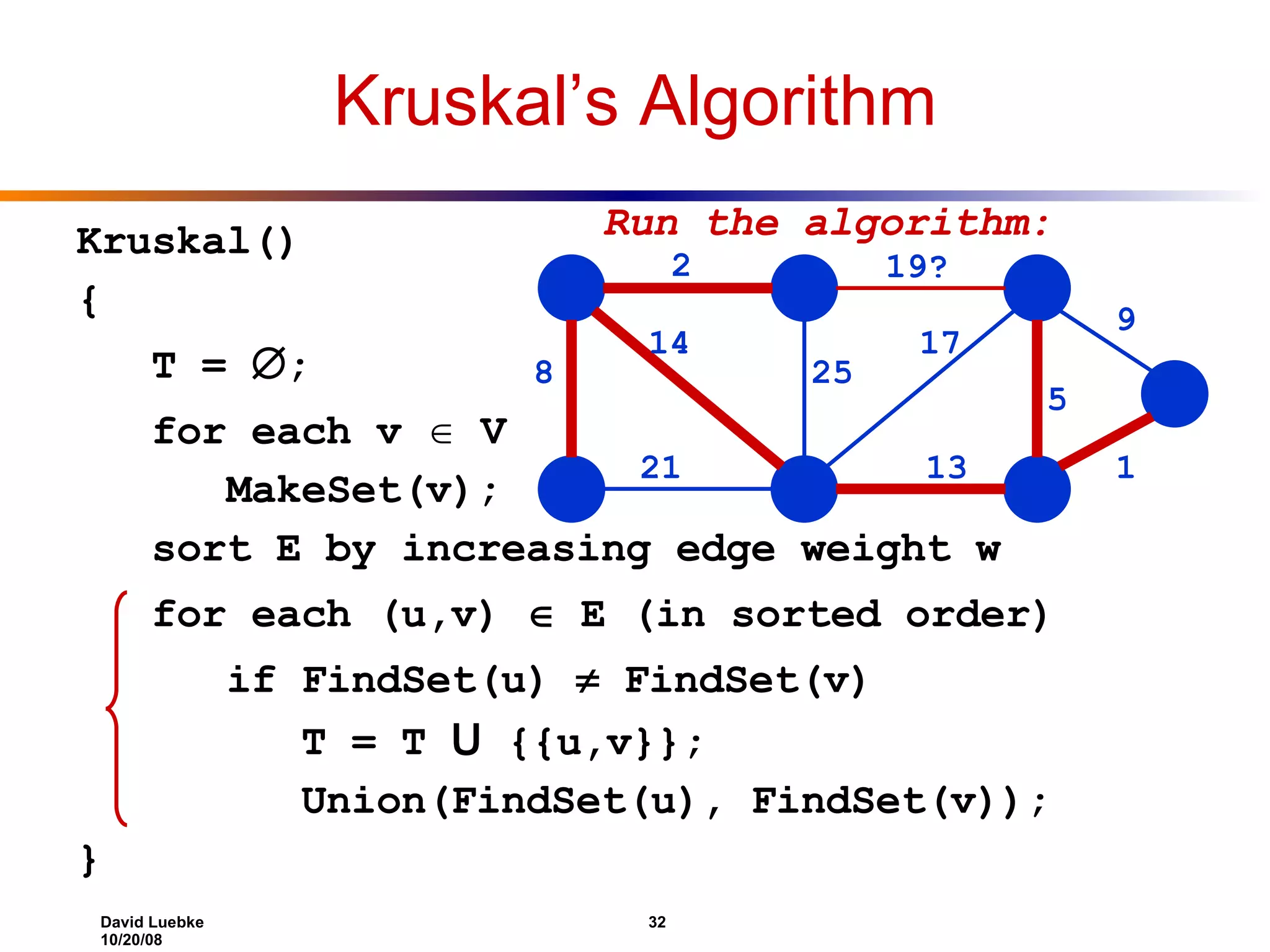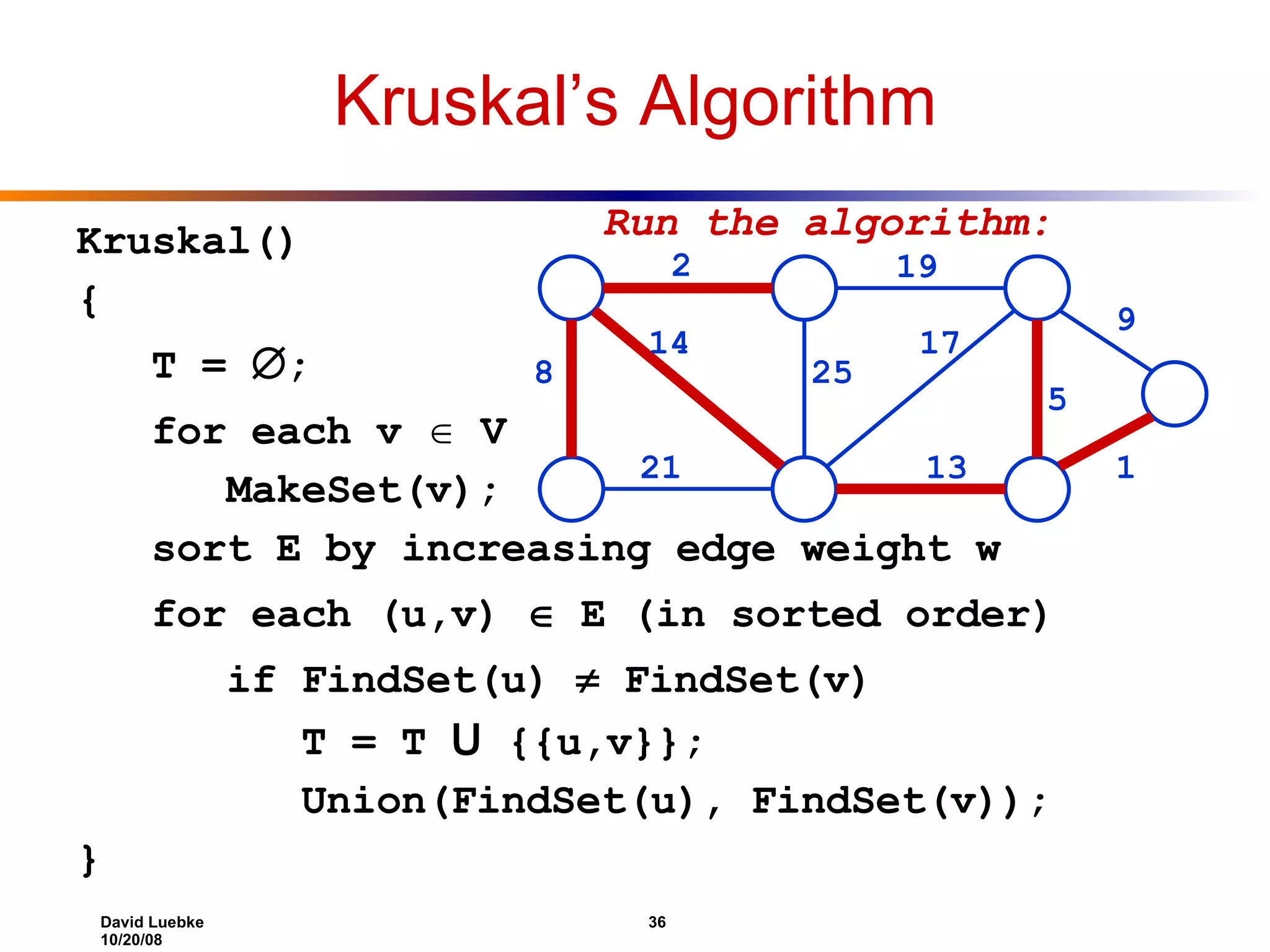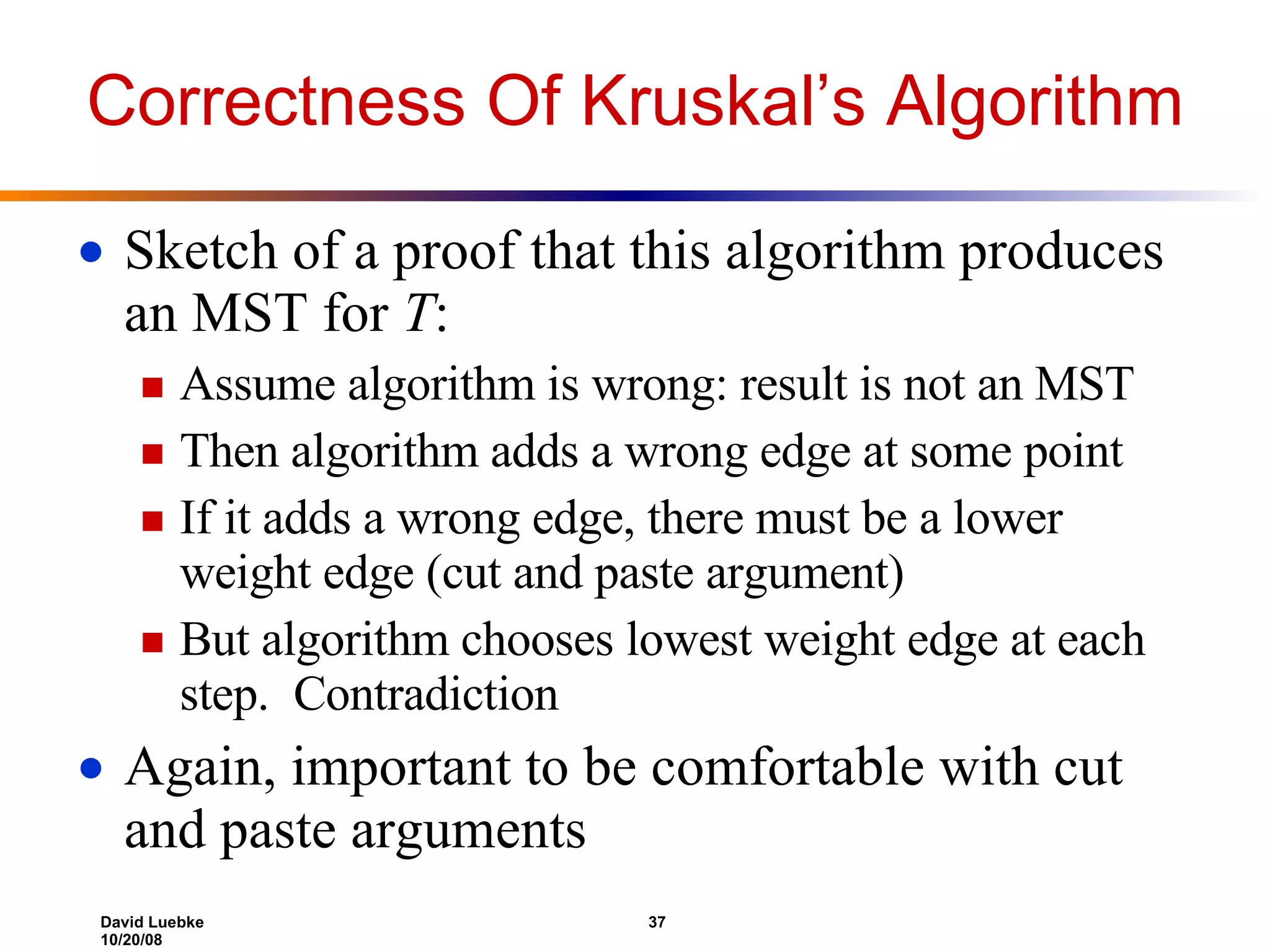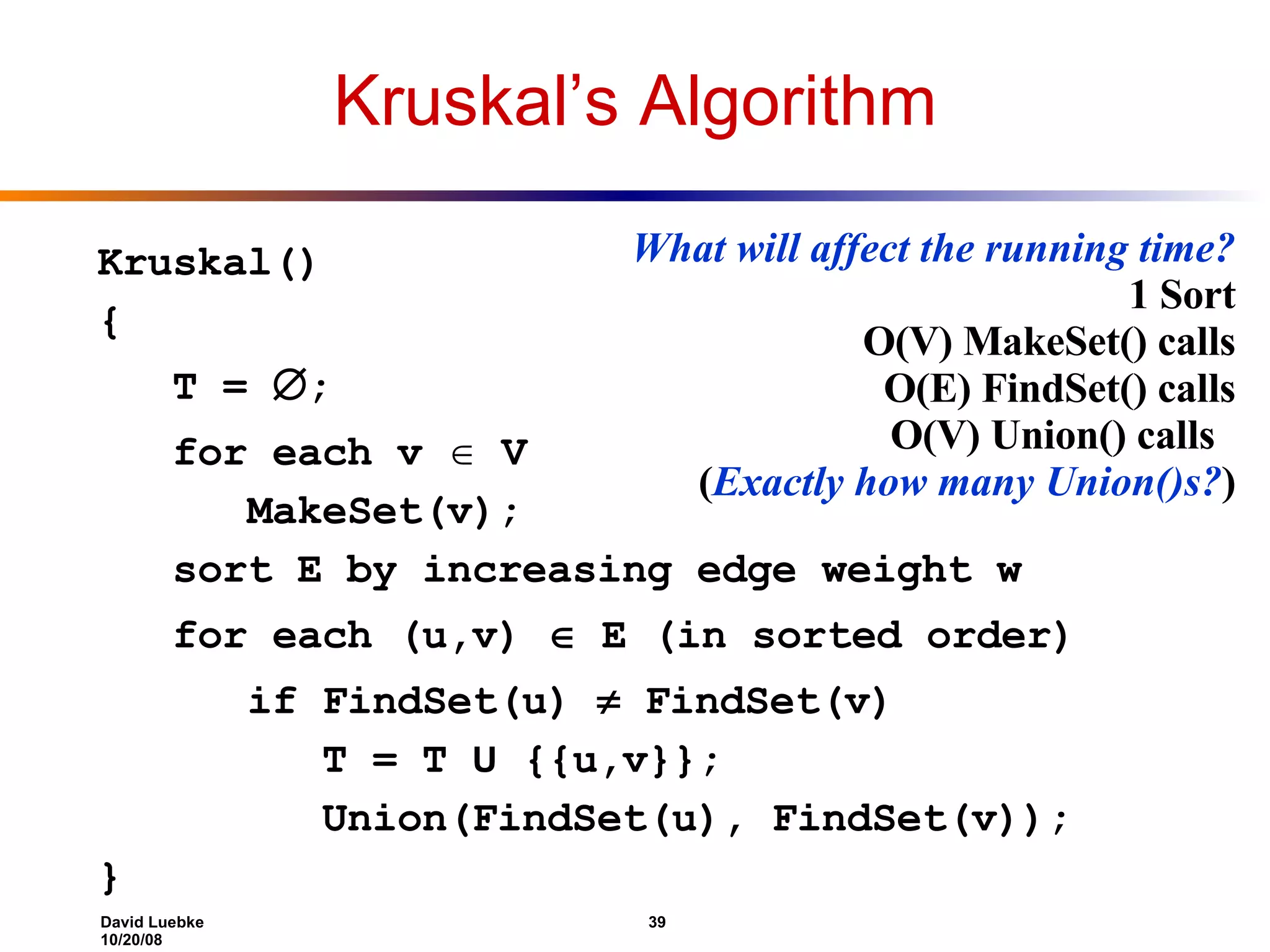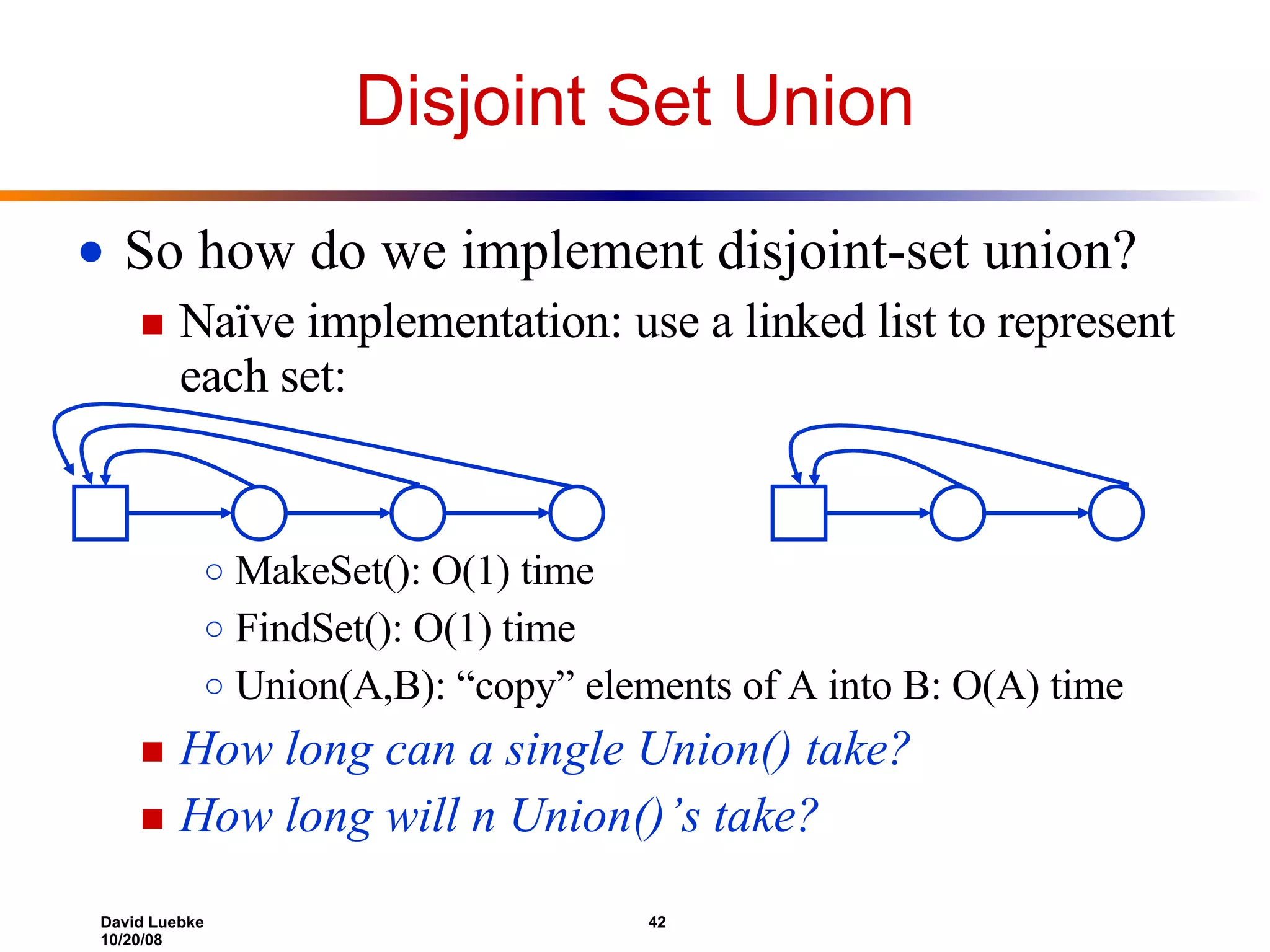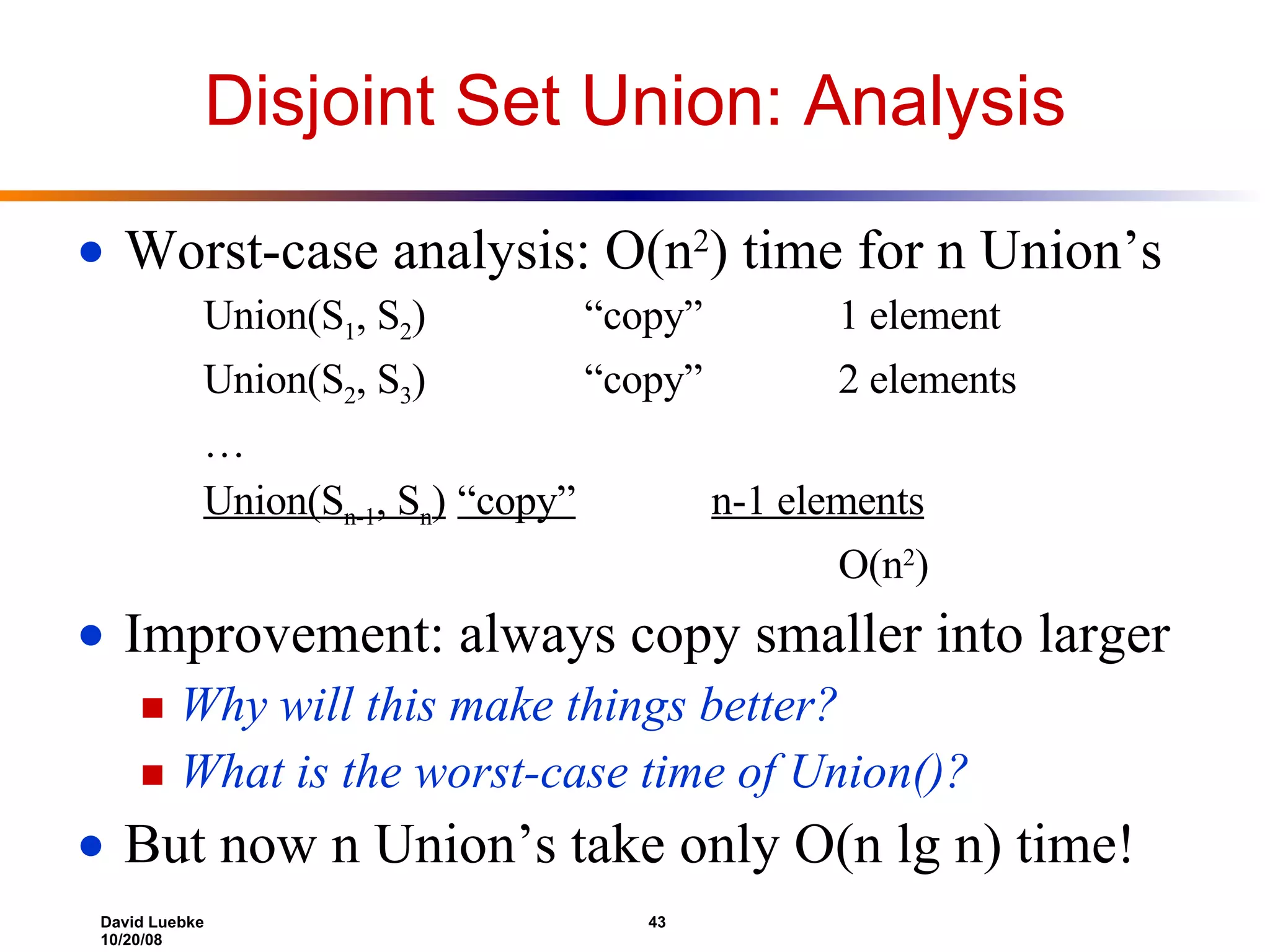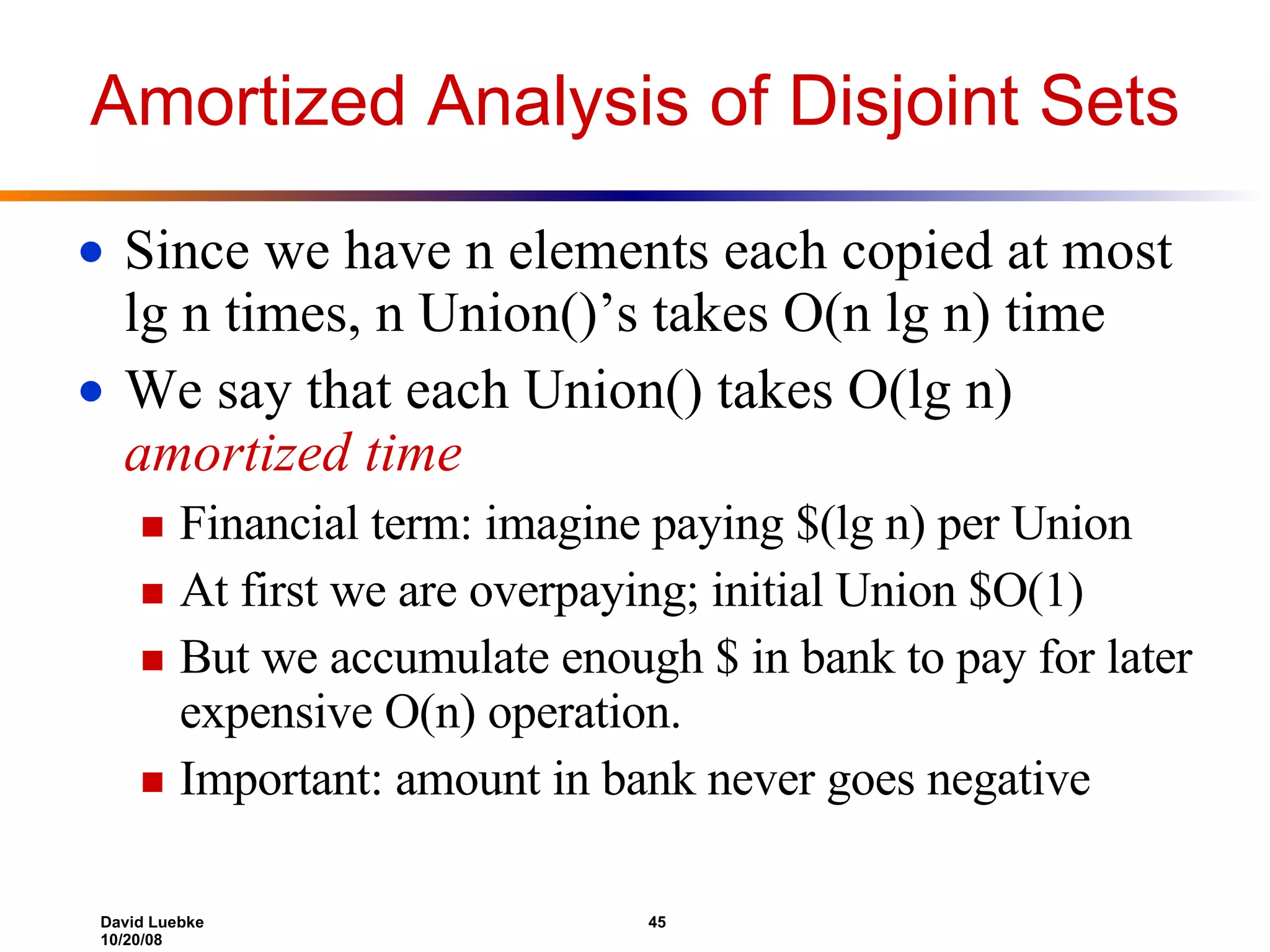The document discusses algorithms and data structures covered in a CS algorithms course, including Dijkstra's algorithm, Bellman-Ford algorithm, shortest paths in DAGs, Kruskal's algorithm for minimum spanning trees, and disjoint-set union data structures. It provides examples and explanations of how each algorithm works.

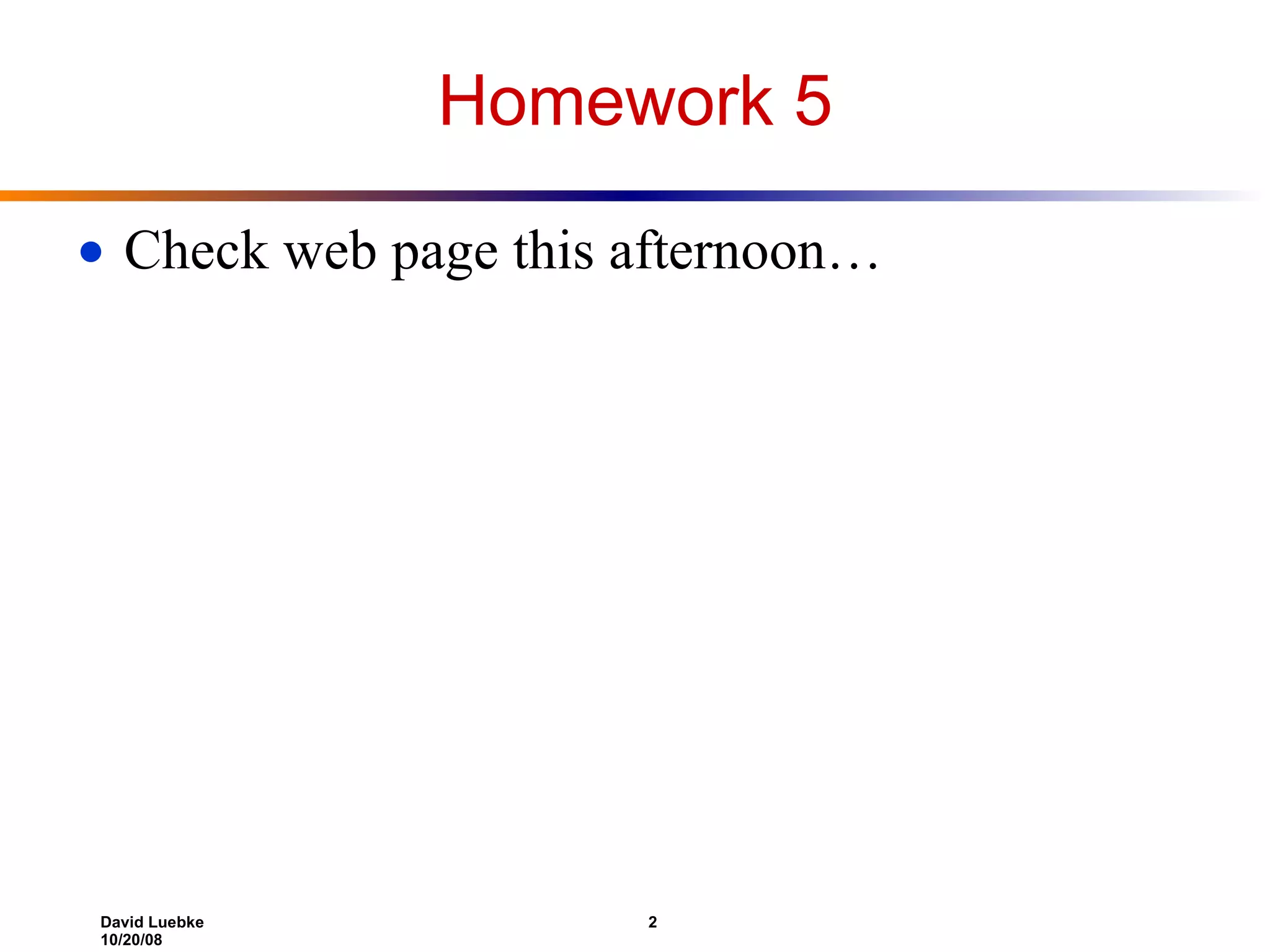
![Review: Bellman-Ford Algorithm BellmanFord() for each v V d[v] = ; d[s] = 0; for i=1 to |V|-1 for each edge (u,v) E Relax(u,v, w(u,v)); for each edge (u,v) E if (d[v] > d[u] + w(u,v)) return “no solution”; Relax(u,v,w): if (d[v] > d[u]+w) then d[v]=d[u]+w Initialize d[], which will converge to shortest-path value Relaxation: Make |V|-1 passes, relaxing each edge Test for solution: have we converged yet? Ie, negative cycle?](https://image.slidesharecdn.com/22-1224487934960641-9/75/lecture-22-3-2048.jpg)

![Review: Dijkstra’s Algorithm If no negative edge weights, we can beat BF Similar to breadth-first search Grow a tree gradually, advancing from vertices taken from a queue Also similar to Prim’s algorithm for MST Use a priority queue keyed on d[v]](https://image.slidesharecdn.com/22-1224487934960641-9/75/lecture-22-5-2048.jpg)
![Dijkstra’s Algorithm Dijkstra(G) for each v V d[v] = ; d[s] = 0; S = ; Q = V; while (Q ) u = ExtractMin(Q); S = S U {u}; for each v u->Adj[] if (d[v] > d[u]+w(u,v)) d[v] = d[u]+w(u,v); Relaxation Step Note: this is really a call to Q->DecreaseKey() B C D A 10 4 3 2 1 5 Ex: run the algorithm](https://image.slidesharecdn.com/22-1224487934960641-9/75/lecture-22-6-2048.jpg)
![Dijkstra’s Algorithm Dijkstra(G) for each v V d[v] = ; d[s] = 0; S = ; Q = V; while (Q ) u = ExtractMin(Q); S = S U {u}; for each v u->Adj[] if (d[v] > d[u]+w(u,v)) d[v] = d[u]+w(u,v); How many times is ExtractMin() called? How many times is DecreaseKey() called? What will be the total running time?](https://image.slidesharecdn.com/22-1224487934960641-9/75/lecture-22-7-2048.jpg)
![Dijkstra’s Algorithm Dijkstra(G) for each v V d[v] = ; d[s] = 0; S = ; Q = V; while (Q ) u = ExtractMin(Q); S = S U {u}; for each v u->Adj[] if (d[v] > d[u]+w(u,v)) d[v] = d[u]+w(u,v); How many times is ExtractMin() called? How many times is DecraseKey() called? A: O(E lg V) using binary heap for Q Can acheive O(V lg V + E) with Fibonacci heaps](https://image.slidesharecdn.com/22-1224487934960641-9/75/lecture-22-8-2048.jpg)
![Dijkstra’s Algorithm Dijkstra(G) for each v V d[v] = ; d[s] = 0; S = ; Q = V; while (Q ) u = ExtractMin(Q); S = S U {u}; for each v u->Adj[] if (d[v] > d[u]+w(u,v)) d[v] = d[u]+w(u,v); Correctness: we must show that when u is removed from Q, it has already converged](https://image.slidesharecdn.com/22-1224487934960641-9/75/lecture-22-9-2048.jpg)
![Correctness Of Dijkstra's Algorithm Note that d[v] (s,v) v Let u be first vertex picked s.t. shorter path than d[u] d[u] > (s,u) Let y be first vertex V-S on actual shortest path from s u d[y] = (s,y) Because d[x] is set correctly for y's predecessor x S on the shortest path, and When we put x into S, we relaxed (x,y), giving d[y] the correct value s x y u p 2 p 2](https://image.slidesharecdn.com/22-1224487934960641-9/75/lecture-22-10-2048.jpg)
![Correctness Of Dijkstra's Algorithm Note that d[v] (s,v) v Let u be first vertex picked s.t. shorter path than d[u] d[u] > (s,u) Let y be first vertex V-S on actual shortest path from s u d[y] = (s,y) d[u] > (s,u) = (s,y) + (y,u) ( Why? ) = d[y] + (y,u) d[y] But if d[u] > d[y], wouldn't have chosen u. Contradiction. s x y u p 2 p 2](https://image.slidesharecdn.com/22-1224487934960641-9/75/lecture-22-11-2048.jpg)
